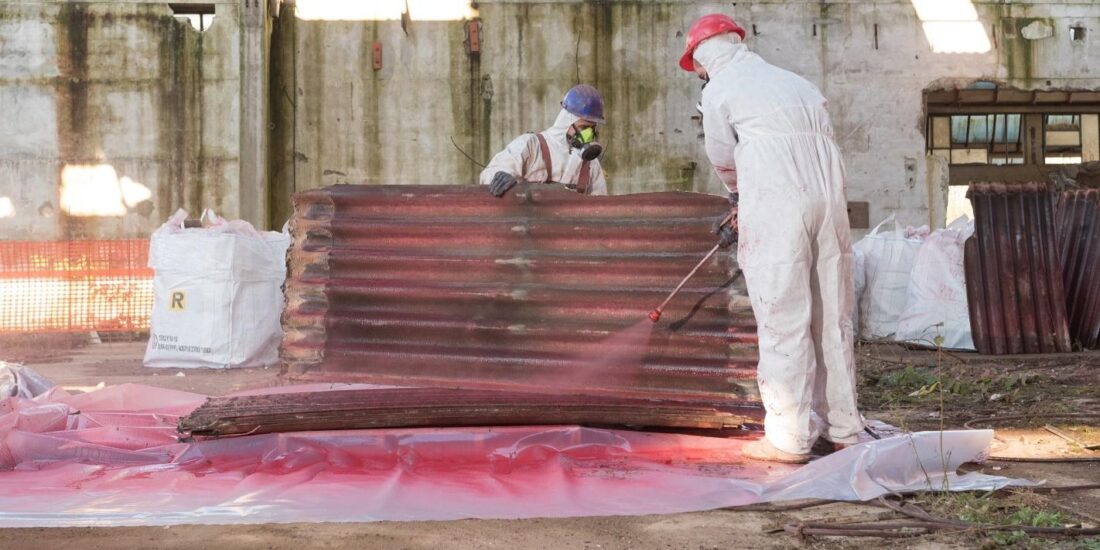Asbestos removal is a highly specialised and critical task, especially when it comes to large-scale projects. In Leeds, dedicated professionals like SAS are tackling this challenge with utmost precision and care. This two-part blog post delves into the meticulous process employed by these experts, from the initial assessment and careful removal to the final disposal and thorough decontamination. With a steadfast commitment to safety and regulatory compliance, asbestos removal companies in Leeds ensure that these hazardous projects are managed effectively, safeguarding public health and the environment.

Initial Assessment and Surveying
Uncovering the Hidden Hazard
The first step in any large-scale asbestos removal operation is a thorough assessment. Skilled professionals meticulously inspect the premises to determine the presence and extent of asbestos-containing materials (ACMs). Utilising state-of-the-art surveying technology, these experts can pinpoint the locations of ACMs, even those hidden in plain sight, within large complexes.
The Blueprint of Asbestos Mapping
In Leeds, these initial surveys form the blueprint for the entire project. They are not only about identifying asbestos but also understanding how it integrates with the building’s infrastructure. This crucial stage dictates the scope and safety measures necessary for the subsequent removal process.
Project Planning and Compliance
Strategising the Safe Removal
Once the presence of asbestos is confirmed, detailed project planning commences. This involves strategising the removal process, setting realistic timelines, allocating the necessary resources, and preparing for any potential challenges that might arise during the operation.
Navigating the Legal Framework
Compliance is the backbone of asbestos removal in Leeds. Firms ensure that each step of the project adheres strictly to the UK’s rigorous health and safety regulations. From acquiring the right permits to following approved codes of practice, every aspect is double-checked for legal compliance.
Safety Protocols and Containment
Ensuring the Safety of All
Safety is the highest priority when dealing with a material as dangerous as asbestos. Removal companies implement robust safety protocols to protect their workers, the public, and the environment. This includes the use of personal protective equipment (PPE), respiratory protective equipment (RPE), and strict on-site safety procedures.
Airtight Containment Methods
In large-scale projects, where the risk of asbestos fibre release is significant, companies use advanced containment methods. These might include sealed work areas, negative pressure enclosures, and specialised ventilation systems to prevent any asbestos fibres from escaping into the surrounding environment.
Asbestos Removal Techniques and Tools
Advanced Techniques for Complex Tasks
The removal of asbestos on a large scale requires more than just manual labour; it necessitates advanced techniques that can only be carried out by highly trained professionals. These may include the use of sophisticated vacuum systems equipped with HEPA filters, wetting agents to minimise dust, and thermal methods for non-friable materials.
The Right Tools for the Job
Asbestos removal experts in Leeds come equipped with an arsenal of specialised tools designed for efficiency and safety. These tools are selected based on the type of ACM present and the particular challenges of the building’s architecture, ensuring that all asbestos is removed effectively and with minimal risk.
Waste Disposal and Decontamination
The Final Resting Place for Asbestos
After the thorough removal of asbestos, the focus shifts to its disposal. Licensed asbestos removal firms in Leeds follow a stringent protocol to package the harmful waste securely, using labelled, heavy-duty bags or sealed containers. These measures prevent any potential release of fibres during transportation.
Scrubbing Away the Remnants
Decontamination is a critical closing act for both the site and the equipment used. Specialist decontamination units, often set up on-site, ensure that all traces of asbestos are eradicated. For equipment, rigorous cleaning takes place, while disposable protective gear is treated as asbestos waste, ensuring that nothing that has come into contact with asbestos remains a threat.
Post-Removal Inspection and Air Monitoring
Certifying Safety Post-Asbestos
The job isn’t finished when the last of the asbestos is removed. A thorough post-removal inspection is essential to certify the area is free from asbestos. Experts conduct a visual examination and may employ air sampling tests to ensure that the air quality meets health and safety standards.
Breathing Easy with Air Monitoring
Ongoing air monitoring is crucial, especially for large-scale projects where asbestos fibres may have been more widely distributed. This process provides peace of mind that the building is safe for reoccupation and that the asbestos removal project has been successful.
In the hands of professionals, asbestos removal becomes a finely tuned operation, from the first survey to the final air quality check. Leeds’ asbestos removal companies are equipped with the knowledge, tools, and commitment to turn what is often a challenging situation into a controlled and safe process. The diligence and expertise displayed at each step underscore the importance of professional handling in such critical operations, ensuring that large-scale projects are conducted with the community’s health as the foremost priority.



